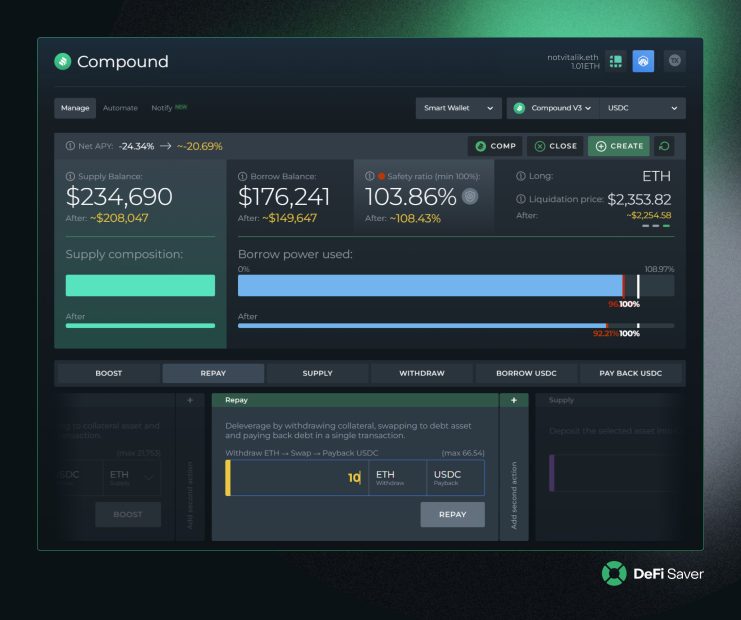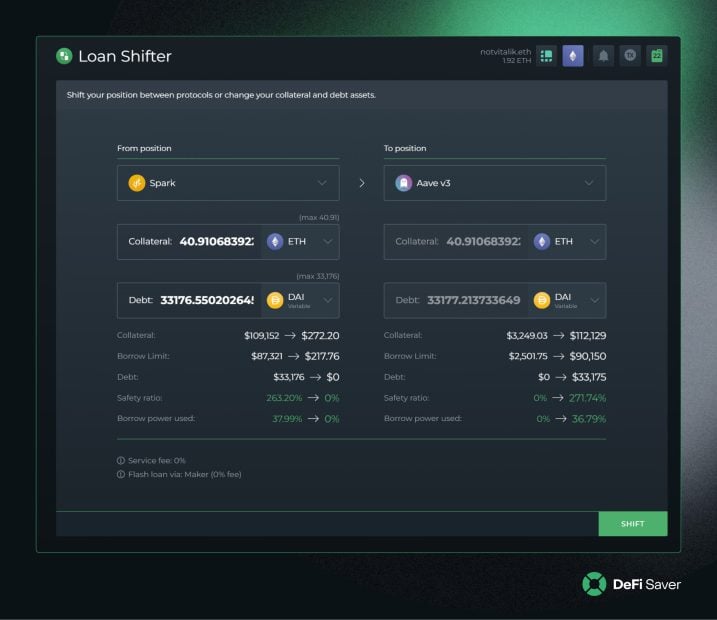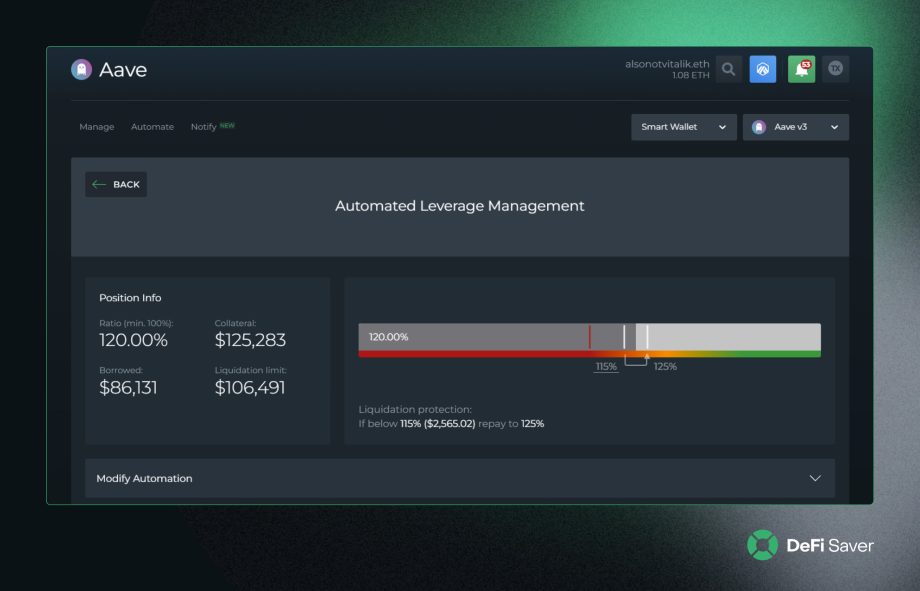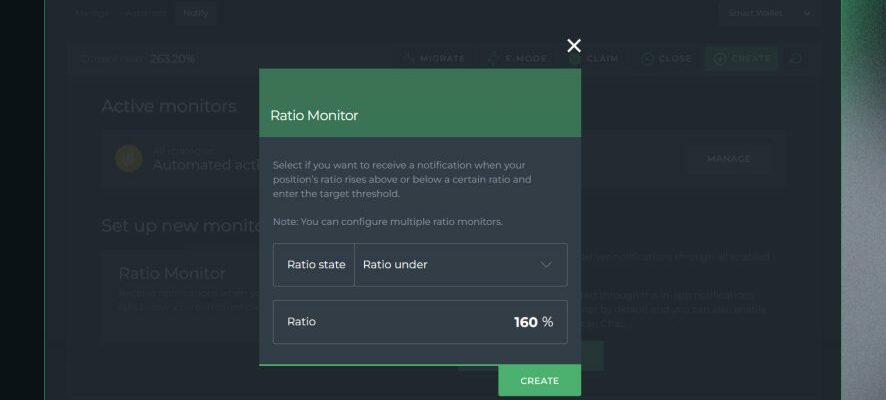Carrying out financial transactions via Decentralized Finance (DeFi) is an alternative to traditional lending. As part of the agreement, the participant deposits part of his crypto assets as security. But if the value of the security falls below a certain threshold due to price fluctuations, there is a risk of liquidation. In addition, providers are entitled to charge liquidation fees depending on their terms and conditions.
Fees at Aave, Compound and Co.
A few examples show what consequences a liquidation of well-known DeFi providers can have. With Aave (v2 and v3), liquidations amount to up to 50 percent of the total debt. The amount of the penalty fees depends on the asset deposited as security. With Compound v2, liquidations can take place partially or completely. The penalty fee varies depending on the asset.
With Compound v3, liquidation affects all debts taken on. The remaining value of the collateral after deducting the penalty fee will be returned in the base currency used by the borrower. MakerDAO charges a fixed liquidation penalty of 13 percent. With Liquity, all debts are paid off during liquidation. Remaining collateral is also divided between the provider and the participants in the liquidity pool, so that in the end you are left with nothing.
The examples show how costly liquidations can be for participants in DeFi transactions. But this can be done with the following 5 tips and that DeFi Savers avoid.
Keep track of your position
Every DeFi position should be followed closely to avoid any unpleasant surprises. This is very easy with well-known providers such as Aave, Compound, Spark or Liquity. Here’s how you can set up the DeFi Saver and receive a timely warning via email or Telegram if the position is at risk. This allows you to react quickly before liquidation occurs.

Liquidate yourself in whole or in part
DeFi participants have the opportunity to influence the liquidation themselves. This allows you to use your existing collateral to pay off some of the debt early, before there is increased risk to the position. The DeFi Saver is a useful support. DeFi Saver completes the three-step process of withdrawing, exchanging and paying back with just one transaction. This saves you a lot of time and effort.


Switch DeFi Protocol
Moving to a DeFi protocol with a higher loan-to-value (LTV) is another option to protect yourself from liquidations. The quick change is made possible by flash loans, which offer the chance to pay off your debts immediately so that you can get your collateral and deposit it with another provider. After taking out a new loan, you can repay the flash loan you took out immediately.
What may sound complex at first is… DeFi Savers Done very quickly with just one transaction.


Use automated protection options
Constantly keeping an eye on the financial transactions of DeFi providers takes time. Automated options that protect against liquidation are therefore practical. It offers exactly such services DeFi Savers.
With supported providers like Aave, Compound, Spark, Liquity or Morpho, you can take a break and still not have to worry about liquidation. Among the many options of the DeFi Saver, the ability to automatically close the deal and set up a stop loss are particularly popular.
When you liquidate the position, part of your deposited security will be used to pay off the debt so that the position is less at risk. With stop loss, on the other hand, the position is closed completely as soon as a threshold price you have previously set is reached. This prevents liquidation by the provider with high penalty fees.
What is important for you to know is that despite the automation, you remain in control of your DeFi trades at all times. The options are not fiduciary.


Watch out for gas fees
The high gas fees that can arise from financial transactions in the DeFi sector are often given little consideration. If the network is under heavy load when prices are volatile, such as a rapid correction, transaction fees rise rapidly. A transaction that just charged a fee of 0.02 ETH can suddenly cost 0.4 ETH.
But there is an opportunity to avoid these high gas fees by using L2 networks, which offer significantly lower transaction costs. It’s worth trying these out before opening your next position on a credit protocol. But even if you prefer to move on the Ethereum main network, you should pay attention to the fluctuating gas fees so as not to catch the most expensive time.
Sponsored post
Disclaimer: Sponsored posts are paid articles for the content of which the advertising companies are solely responsible. BTC-ECHO bears no liability for the promised services or investment recommendations. The article is intended solely for information purposes and does not represent any purchase or sale recommendations. It is neither explicitly nor implicitly to be understood as a guarantee of a specific price development of the financial instruments mentioned or as a call to action. The purchase of securities or cryptocurrencies involves risks that can lead to the total loss of the capital invested. The information does not replace expert investment advice tailored to individual needs. Liability or guarantee for the topicality, correctness, appropriateness and completeness of the information provided as well as for financial loss is neither expressly nor implicitly assumed. Posts marked “Sponsored” or “Advertisement” are published independently by, for example, guest commentators, news agencies and advertising companies. As a result, the content of the contributions cannot be determined by the investment interests of BTC-ECHO or its employees or bodies. The guest commentators, news agencies and companies are not part of the BTC-ECHO editorial team. Their opinions do not necessarily reflect the opinions and views of BTC-ECHO and its employees.
This might also interest you
